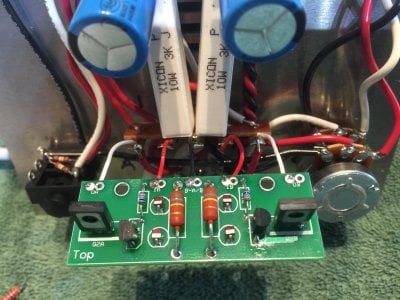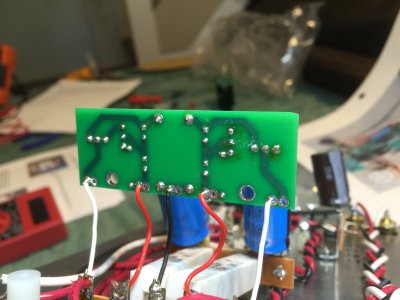Built standard Crack. All voltages good, ran for the last month and a half with no issues.
Started building Speedball. Ran into a problem.....
All LEDs on (2 9 pin socket and 4 on small board), went thru the troubleshooting flowchart leg for OA or OB above 110 and all checks out OK. However, my voltages are off by a factor of 2 at all 4 small board locations.
That is, OA "and" OB are around 150, not 75ish..........And IA "and" IB are around 380, not 190ish.
BTW, B-A/B is zeroV
This seems to imply something that is common to the whole board and not a particular solder connection or component (since the entire board has this problem).
Any thoughts as to what might be affecting these voltages by a factor of 2? Is it possible that the 12AU7 tube has a problem?
Mark Ferring
Started building Speedball. Ran into a problem.....
All LEDs on (2 9 pin socket and 4 on small board), went thru the troubleshooting flowchart leg for OA or OB above 110 and all checks out OK. However, my voltages are off by a factor of 2 at all 4 small board locations.
That is, OA "and" OB are around 150, not 75ish..........And IA "and" IB are around 380, not 190ish.
BTW, B-A/B is zeroV
This seems to imply something that is common to the whole board and not a particular solder connection or component (since the entire board has this problem).
Any thoughts as to what might be affecting these voltages by a factor of 2? Is it possible that the 12AU7 tube has a problem?
Mark Ferring



